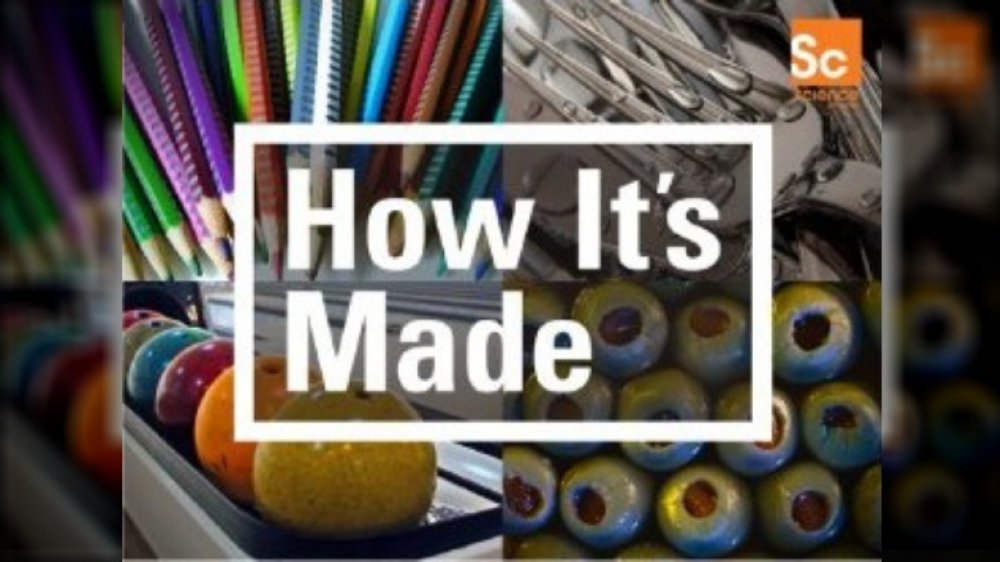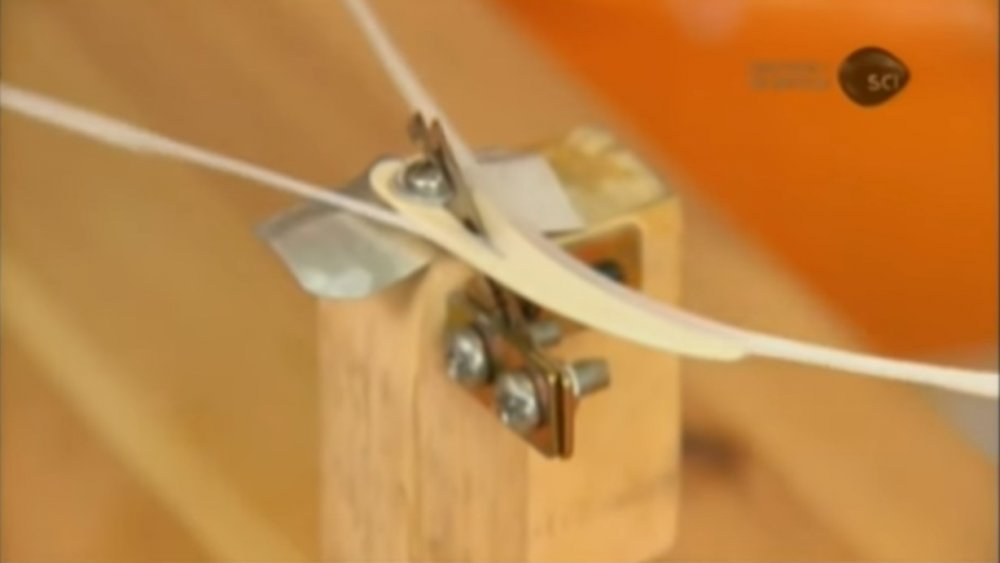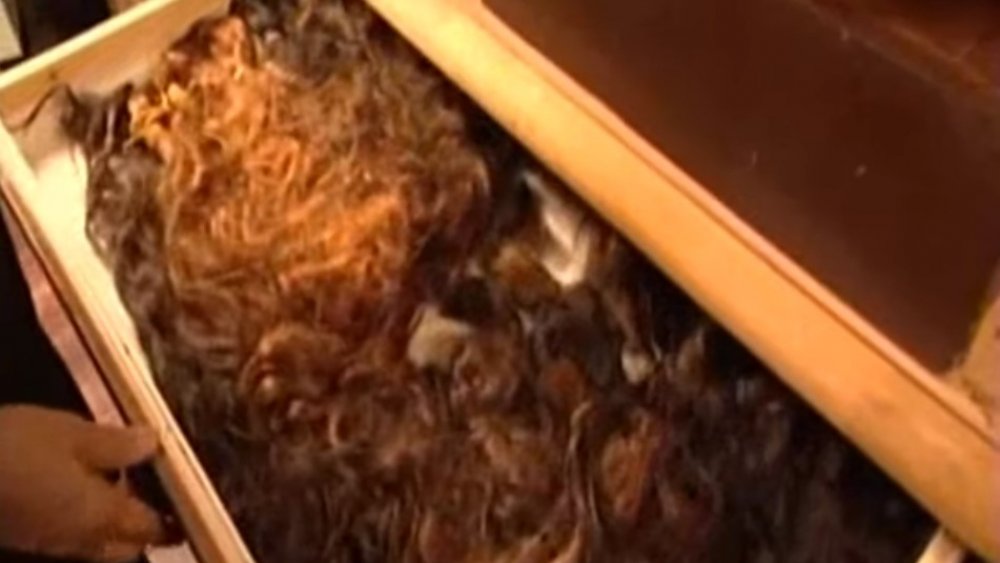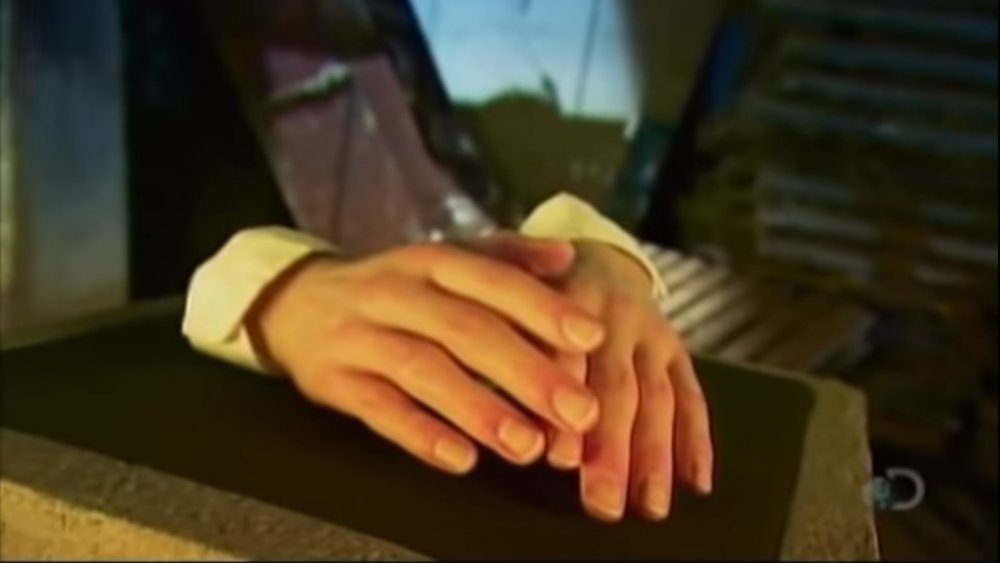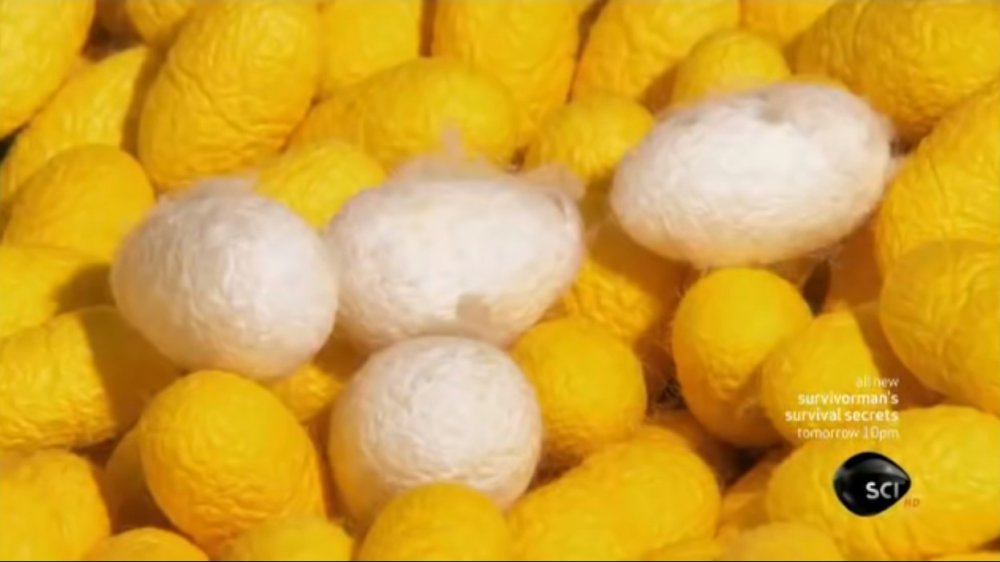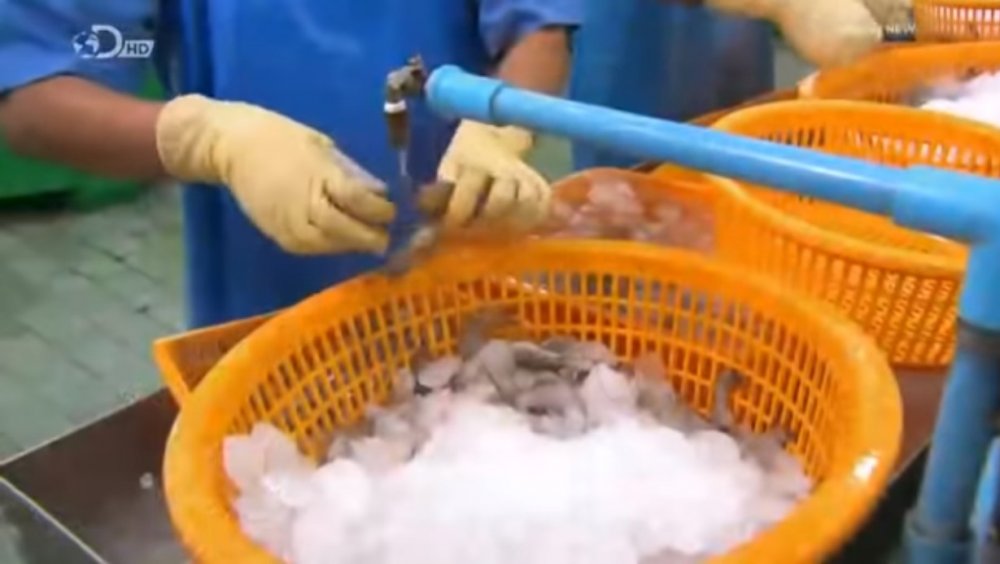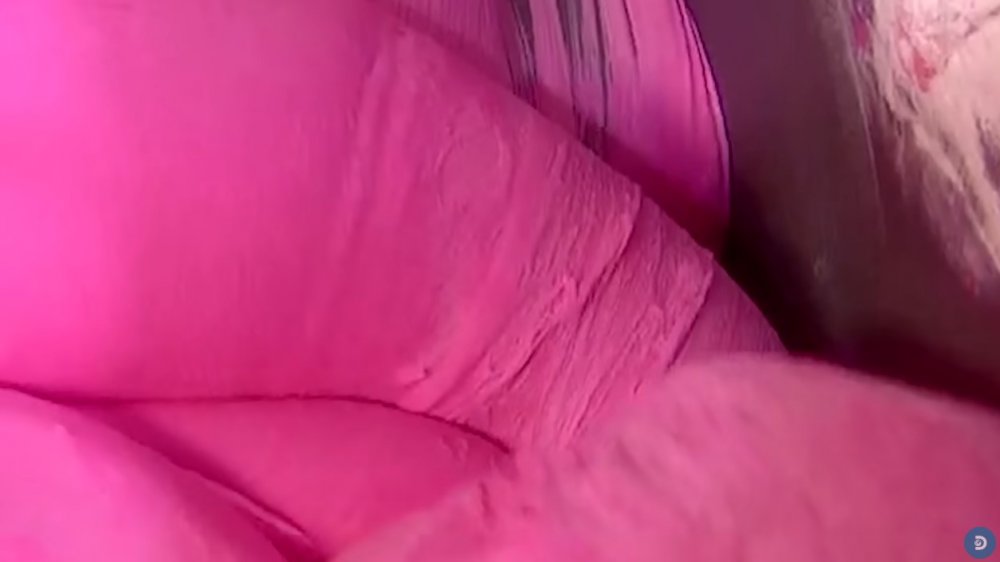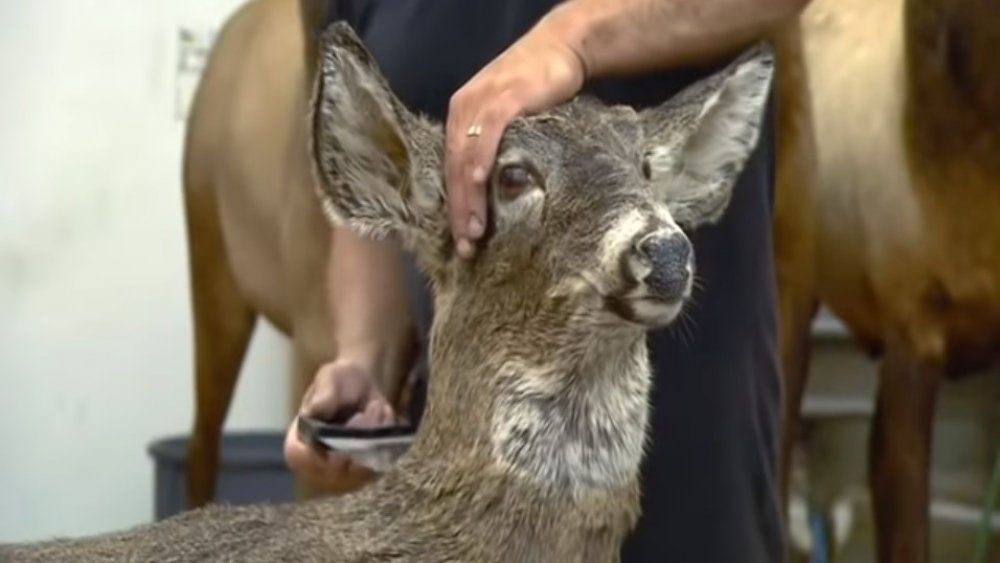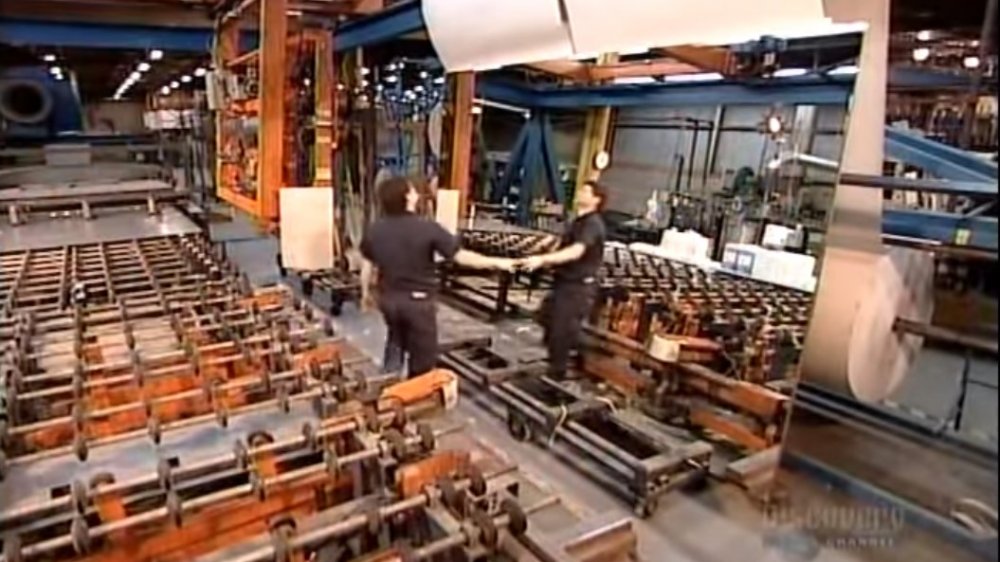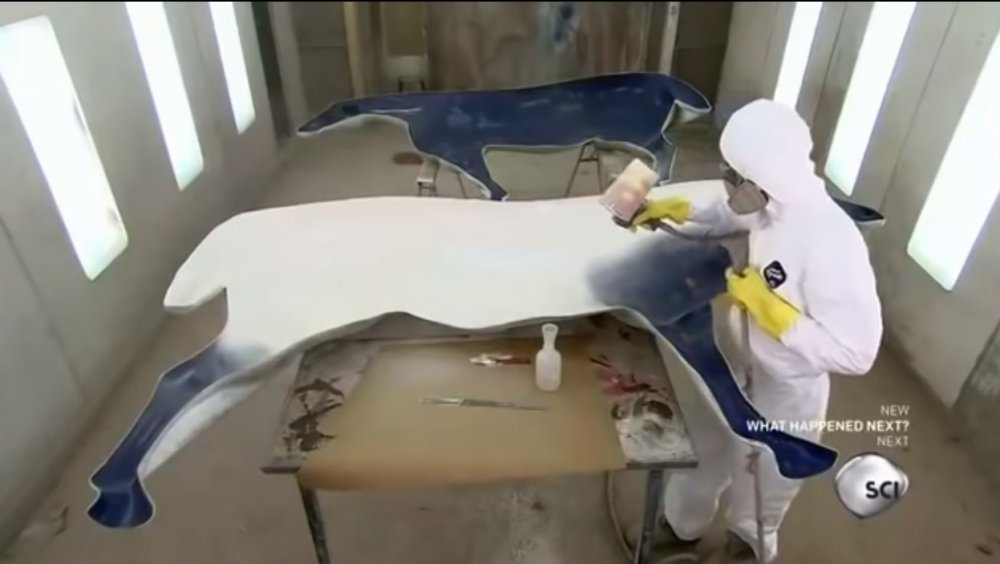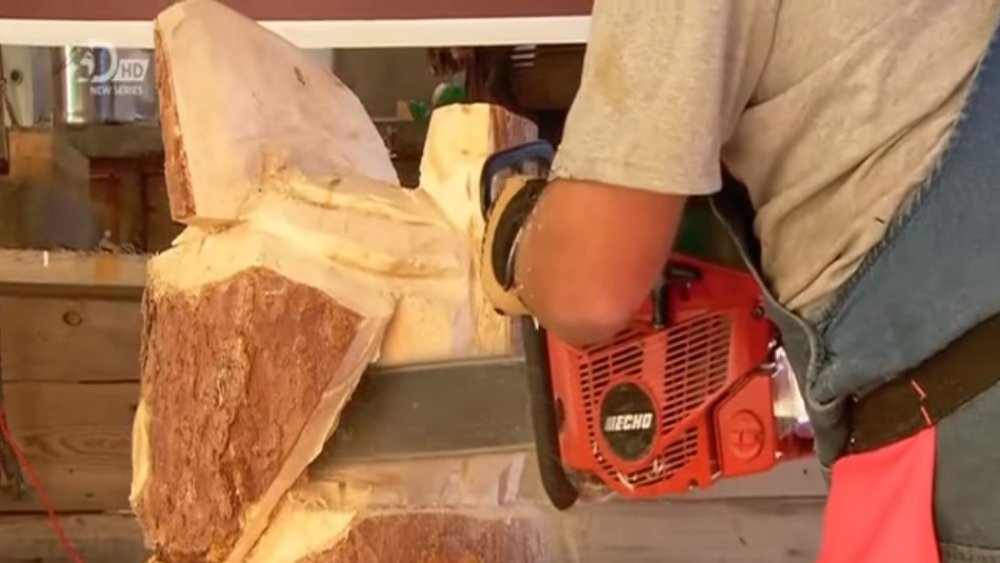The Most Bizarre Episodes Of How It's Made
The Discovery Channel found a bona fide hit with How It's Made. Now in its 32nd season and on the air for nearly two decades, the show teaches viewers anything they could ever want to know about how various and assorted things they come across in their day-to-day lives are created.
There's a kind of satisfying beauty in watching an assembly line of frozen burritos whizzing by or seeing a creator meticulously craft unique handmade goods. In segments lasting around five minutes, you can see how something goes from raw materials to finished product, all without even getting off the couch.
But sometimes, these segments get downright weird. From unusual products you may or may not have even known existed to the aspects of everyday things you'd rather be blissfully unaware of, occasionally, the show's episodes leave you with far more questions than answers and with knowledge you may not have wanted beforehand.
Violin strings are made out of what now?
The violin is one of the most beautiful music-makers, both to see and to hear. Even its method of play, with a long, elegant bow, feels very refined and majestic. So the strings have to be made out of, like, fairy dust or something, right? Not exactly. Violin strings are made out of gut. That's not just a name or a euphemism for something else. They're made out of for-real sheep intestines.
How It's Made dives right in, showing us a big bowl of pale, gray sheep guts that a worker immediately reaches into. According to the narrator, they come straight from nearby slaughterhouses, cleaned and emptied. They are then submerged in cold water for two days which causes the guts to decay in a "very smelly" process. This just gets better and better.
The outer fat and mucus membranes are removed by simply scraping them off. When all of the outer layers are removed (which takes several days), all that's left is a thin layer of muscle, which is sliced in half by pulling it across a blade. While the workers have worn gloves up to this point, the people doing the cutting apparently see no need for them. Yuck. They then bleach the long strands of intestinal muscle to keep them from turning brown. Finally, they're dried by stringing them across a room in what looks like a particularly heinous crime scene, then wound into strings.
Enter the Wigmaster
Wigs are unsung heroes in our society. While they're generally mocked (especially toupees and weaves), they really do help people who might have trouble growing their own hair or had to cut it off. Sometimes they're just good for changing up your look, and they're certainly indispensable for actors. Like it or not, hair tends to be important to many humans and wigs can handily help out there.
And the cool thing about the How It's Made episode on wigs is seeing them hand-made by a specialist, who has the hilarious job title of wigmaster, which makes them sound like a rejected 80s B-horror villain. But for real, it's intricate, detailed work that takes a steady hand and years of practice and expertise. Just threading the individual hairs looks so painstaking that your hands probably cramp up just watching it.
But there's also something about the process that firmly plants it in the uncanny valley. From whipping the hair against a small bed of spikes to making odd-looking molds of people's heads, it gets pretty weird. The cherry on top, though, is the wigmaster's collection of hair, stuffed into a drawer, of which he grabs handfuls at a time. It just feels very unsettling. The only other people on Earth with drawers full of hair are definitely serial killers.
Wax figures on parade
Let's not mince words. Wax figures are creepy enough on their own. That's kind of the appeal. You know it's going to be maybe 85 percent human-looking while the remaining 15 percent is pure nightmare fuel. It's sort of the charm, if by charm you mean terror. Wax figures make their home comfortably in the part of our brains reserved for "can't look away" horrors, like creepy dolls or killer clowns.
Seeing them made is exactly as frightening as you'd expect, naturally. It starts with a metal skeleton, covered in a thin layer of clay, which makes it look like some emaciated, skinless monster from under Guillermo del Toro's bed. The early forms of the head alone are terrifying — hollow-eyed, sunken-cheeked ghouls with scraps of clay flesh stuck loosely to it.
Even as the figure takes on a more human look, it looks like someone described humans to aliens and then the aliens tried to recreate them based on that description. Oddly, the more human it gets, the creepier it looks. While a wax figure's face pretty much always has a glassy-eyed, dead look, their hands are creepily accurate, and it's only by seeing them not attached to a body that they become the stuff of nightmares. Even the process for creating hair, similar to the creation of a wig, is made supremely uncomfortable when you find out that the wax scalp is punctured and then melted with a hot needle to add the individual hairs.
Creating the natural beauty of silk
As you likely already know, silk doesn't fall fully formed from the sky. It's spun by a specific variety of worms called silkworms. So, silk manufacturers probably have lots of silkworms in little silkworm terrariums, and they happily spin silk all day, every day, right? Er, not exactly. They do have little silkworm terrariums, and the worms do spin silk in them, but silk thread is produced just once in their lives, for the silkworms' cocoons. They don't just make it all the time.
Specifically, silkworms excrete the thread from their mouths in liquid form, which hardens into thread. So yes, silk is sort of like silkworm barf. They wrap themselves up in it and prepare for the next phase of their lives. Just kidding, workers gather up the cocoons and boil them with the pupae still inside, killing the silkworm. They do this to make sure the silk thread isn't broken during the collection process. Wouldn't that be terrible?
What's especially creepy about this is the volume required. It takes 2,000 to 3,000 boiled cocoons to make just one pound of silk. The cocoons are pretty small, so each one only produces a tiny amount of silk thread. Thus, there's a constant need for more silkworms, and factories breed them en masse. Do you have silk sheets on your bed? If so, congratulations! Your very soft sheets were the result of thousands of boiled worms. Enjoy!
The Silence of the Shrimp
While fresh seafood is almost always the better option (unless it was fished out of a sewer or something), frozen seafood is not bad at all. Seafood keeps very well when frozen, mostly. It lasts a lot longer and tastes pretty much the same. Thus, ever since freezers became part of your average household, frozen seafood has also had a place in our lives.
Frozen shrimp are especially popular. You can serve them, hot or cold, without a lot of prep. While shrimp aren't exactly "made" in a factory, How It's Made does show us the process of getting them into your local freezer section. Things immediately start off ominously, though, because the shrimp are still alive. That... can't be good, can it? The shrimp are immediately submerged in cold water, then put on ice to keep them cold for the rest of the process.
That's when they truly begin. A line of a dozen or so workers pick up each shrimp and, using small metal blades attached to their thumbs, decapitate the shrimp one-by-one. Yes, it is basically a murder line, though they call it the de-heading line. Shrimp are delicious but we really didn't need to know about this part. From there, they're sorted, shelled, and de-veined (not actually a vein, but their digestive tracts). Finally, they're cooked, packaged, and ready for you to eat, if you even want to eat them ever again.
Bubble-yuck
Do you like chewing gum? Maybe it's to freshen your breath or help break a smoking habit. Maybe you just really enjoy gum! But surprise, you probably won't like it any more after seeing how it's made on, uh, How It's Made. We start off with a little history lesson on gum, how it originally came from Ancient Greeks chewing the resin from trees. That doesn't sound so bad. Then the show spills the beans on how modern gum is made with an artificial base, which is nothing but plastics and rubbers. Delicious!
Things don't get better from there. This is bubble gum, so they add coloring to make it bright pink, just like when you were a kid, and then add sweetener. Unfortunately, this ends up making it look like some horribly fuchsia-colored soup with big chunks of goop inside. It gets mixed together, but then it just ends up looking like the titular blob from, y'know, The Blob.
From there, we're treated to views of the gum going through a series of extrusion machines, which brings to mind the big kerfuffle over "pink slime" in food-making from a few years ago. It's not until the very end, when the gum is cut and wrapped, that it finally looks familiar. It's okay to still love gum, but watching it being manufactured is the most unappealing thing in history.
The screams of the Lego people
How meta is it that How It's Made featured an episode about making the things that people use to make other things? All we need now is an episode about how this episode was made, and then a separate episode about how the making-of episode was made, and maybe then we can crash the simulation in which we are obviously living, something made clear by the events of the last several years.
Watching the factory make Lego bricks is cool. They come from pre-made molds, obviously, and they're made in a rainbow of colors. None of that is terribly surprising, but it is very satisfying to watch, nonetheless. However, the episode soon shifts focus, pointing out that Lego aren't just simple bricks. Instead, it shows us how Lego minifig heads are made, and that's when the horror truly begins.
Clearly, minifig heads aren't hand-crafted and painted. They're mass-produced, like any other Lego piece. But there's still something disarmingly frightening about seeing countless decapitated Lego heads being processed through the factory's machinery. It's like your childhood screams in horror when you see it, even though it's completely normal on a rational level. It's like the aftermath of some horrible Lego war. All those souls lost! And, of course, in true How It's Made fashion, the camera lingers on these disembodied Lego people for an awkward amount of time, just so you can absorb the sight into your mind.
Robotic hunting decoys are our cyberpunk dystopia
Throughout the history of man hunting animals, we've devised all sorts of clever tricks to attract prey and make the hunter's job easier. This can range from animal calls or specially scented sprays, on up to hunting decoys, which are life-like animal replicas a hunter might place in an open area to attract curious prey or make them feel more at ease.
But hunting decoys do have one limitation: They don't move. They're stationary, almost like statues instead of like a real animal. That's where robotic hunting decoys step in. It's likely you never even knew these were a thing. They're relatively new to the market and quite expensive, so they aren't all that popular yet. But How It's Made is here to show us how they're made, and yep, it's unsettling as all get-out.
While, on the surface, these may seem to be simple, not-at-all-terrifying robots, their manufacturing shows the truth. Basically, the insides are foam and pretty straightforward. It's the fur where things take a turn. These decoys use actual animal hide, like if Terminators used real skin. Then, after the fur is attached, workers cut off the decoy's head with a saw to install the robotics. Thus is this fearsome amalgam of flesh and machine completed, ready to blend in with its living cousins and definitely not be a harbinger of the robot apocalypse.
Working in a mirror factory would be terrifying
Mirrors are, themselves, useful and their creation is really neat, because you can't quite actually see a mirror, so much as look into it. There's more to them than just glass, though! They're backed with several reflective metals, and even paints. Cool, right? And they're washed and rinsed with special sprays, and then get cut in interesting ways. On a basic level, this is a perfect episode of How It's Made. It takes something ordinary, then shows you all of the clever ways manufacturers make them every day.
But there's something a little more insidious going on alongside all of this, and it doesn't even necessarily have to even do with the show. They were just there to capture it. Mirrors are inherently kinda creepy, as we all know. There are entire horror movies based around scary things popping up in mirrors, for example.
No, what's particularly spooky here is that working in a mirror-making factory must be really stressful. Imagine walking around in a funhouse hall of mirrors for several hours a day. Do people run into mirrors sometimes? If you break some, how many years of bad luck is that? Do people talk to each other's reflections, or jump when they see something coming up behind them in the mirror? The logistics of mirror factories are just plain weird. Do they have special training so employees don't do all the things above?
Blast doors are a real blast
There are some things in this world that we know exist, but probably never think about, especially not how they're designed and built. Blast doors fit firmly into this category. Basically everyone knows what they are, but probably never thought twice about where they come from or how.
So how do these huge, metal doors meant to withstand, well, blasts, get made? Basically, they're big plates of steel welded onto a grid of steel beams. Special insulation is stuffed into the hollow spaces between the steel plates to keep moisture out and, presumably, insulate the door from temperature and sound. Pretty straight-forward, all told, but that's also what makes this segment kind of eerie. The show's narrator calmly explaining how something meant to protect people from explosions and gunfire is made is sort of creepy, like those old PSAs explaining what to do during a nuclear strike.
Yes, blast doors are important and do serve a purpose for which they're hopefully never needed, but there's just something vaguely unsettling about the process because you know that there is a chance that it will be used for that purpose. We wouldn't make blast doors if we didn't need to protect people from blasts, and that realization alone can give this whole segment an unintentionally creepy vibe.
Fake horses, cut in half
Have you ever been to a museum, horse track, or country-style restaurant and seen a big, replica horse or other animal? They're just decor, meant to get you to realize that, yes, this place is very serious about its biscuits and gravy. You may not even give them a second thought. But of course, those things have to be created somehow, and it's not a giant copier making endless duplicates of a real horse, as awesome as that would be.
No, as this How It's Made segment shows us, these faux horses are made of fiberglass and based on a sculpture/mold created by an artist. That all sounds on the up-and-up, but seeing it in practice is pretty spooky. Fake horses are sorta creepy on their own, with a dead-eyed stare and plasticky looking skin, but a half of a fake horse being sprayed down with fiberglass is a whole new ballgame.
Once the two halves of the horse are put together, things look a bit more normal, at least until they cut an enormous square out of the horse's neck so that they can attach the two halves on the inside to help hide the seam. Yikes. Finally, everything is sealed up, the horse is sprayed with primer, and then painted with... automotive paint? Talk about your Ford Mustang.
Rip-roaring art
While How It's Made typically focuses on factory work, they do also showcase handmade products. This can often include art pieces, meant solely for display. It's always fascinating to see an artist work with their medium, such as woodcarving. But have you ever seen wood carved with a chainsaw? No, not like a lumberjack, more like extreme whittling.
While chainsaws are primarily known for the brutal work of chopping down trees and terrifying teenagers in rural Texas, they can actually be used for fine, detailed work as well. Obviously it requires a very steady hand and, thus, probably isn't for everyone, but it is a thing that exists. Whether using ice or wood, chainsaw art is as much for the act of creating as it is for the final product. It's a process that looks oddly calming.
That is until the ever-calm narrator finally takes a moment to point out how wildly dangerous chainsaw art is. Watching the artist work is as amazing as it is bizarre, seeing a tool meant for fast, efficient work instead used to make delicate cuts. It's a bit surreal, and that's before the artist burns the outside of the carved wood to give it more detail. It's pretty metal, no doubt, but it also leaves you wondering who came up with the idea of making art with chainsaws anyway.
